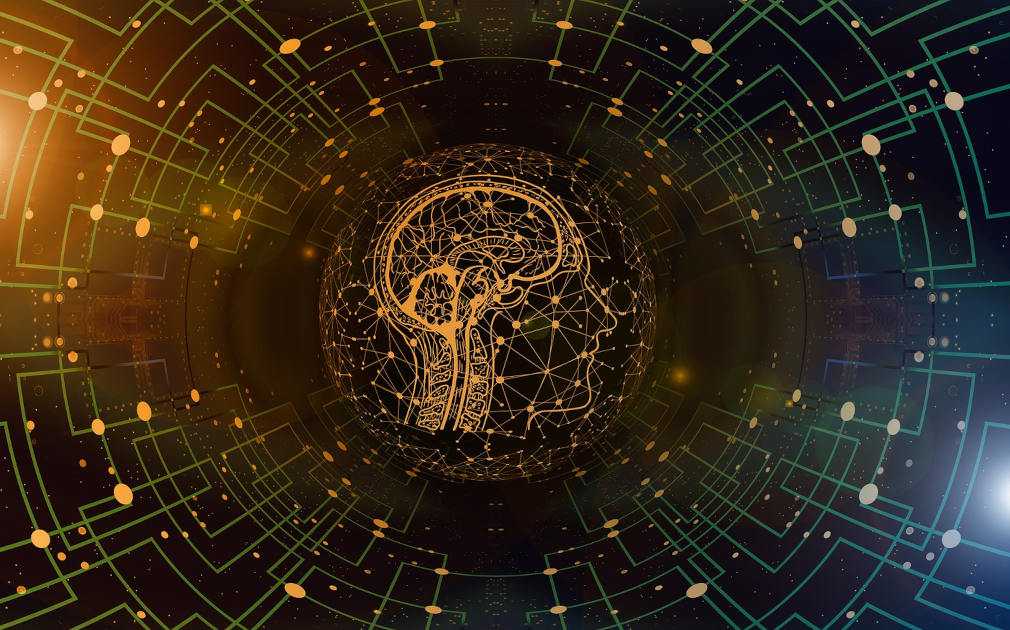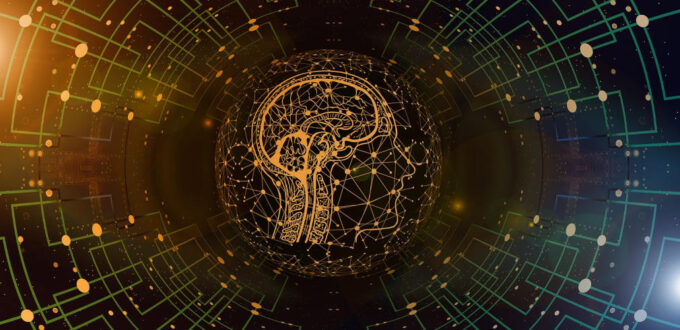
4 strategic ways HR can use AI at work
AI has captured attention for its generative language and imagery, but its greatest benefit to HR may be more far-reaching. Learning how to leverage AI in unique ways can further position HR as organisational enablers.
By now, many of us will have experimented with nascent AI technologies. But far fewer have gone beyond using them for rudimentary writing tasks, basic ideation or general amusement.
While many HR professionals have been using AI in recruitment practices for some time now, and will be aware of AI’s potential beyond email drafts and job ads, AHRI’s September quarter Work Outlook showed that only 20 per cent of respondents were investing in AI technology, with 26 per cent saying it was a near-term priority.
That’s despite research finding that up to 40 per cent of all working hours could be impacted by large language models (LLMs) such as GPT-4 – which is just a fraction of AI’s potential.
These figures suggest that employers have a significant learning opportunity ahead of them. And it goes beyond ChatGPT. There are impressive, big-picture ways AI can change how we work for the better.
Here are four ways HR can leverage AI for more complex tasks and bigger-picture business goals, according to experts:
- Using AI to predict turnover
Employee retention has always been a key concern for HR and leaders alike, but the pressure to retain people has become more intense amid the skills shortage.
According to the Work Institute’s 2022 Retention Report, the average cost to replace an employee is 33 per cent of their base pay, and there’s also a significant time cost to HR leaders – often before they’ve even hired a replacement.
“For decades of turnover research, the key reason why employees stay at organisations is due to their embeddedness: fit, sacrifice and links,” says Andrew Dhaenens, lecturer in the School of Management and Governance, UNSW Business School.
“Building connections at work, and the perception that these benefits and relationships would be lost by leaving, are the primary drivers behind why employees stay.”
While these emotional connections may be hard to quantify, there are contributing factors to an employee’s decision to stay or quit that can be measured. This typically requires HR leaders sifting through complex datasets, containing metrics related to employee demographics, job history, performance and engagement.
“If you make some healthy comparisons with viable alternatives – locations, industries and competitors – and track some affective factors such as work-life balance, satisfaction and emotional exhaustion, you’ll have a strong idea of the people who will voluntarily leave the organisation,” says Dhaenens.
By implementing AI solutions, it’s possible for algorithms to comb through the data and potentially uncover hidden patterns, helping organisations anticipate employee turnover. This can significantly improve retention rates and free up HR leaders’ schedules, he says.
“What AI can add is the speed to which this information can be processed, particularly among other factors and large datasets.”
There is a crucial caveat though, says Dhaenens.
“AI will commonly circumvent other organisational and employee goals in pursuit of its outcomes. It’s important, right now, to think of AI just as you would an overly eager junior employee: if you assign a task, it’s going to work with you to provide answers, be hesitant to admit it’s wrong and miss some important nuances.”
Nevertheless, Dhaenens says this information can be very valuable in identifying employees who may need additional HR support. This means human expertise remains vital.
- Creating inclusive work cultures
There is potential for workplace AI to aid employees living with disabilities. Today, NLP helps people more accurately interpret complex information, such as lengthy company policies, and OpenAI’s GPT-4 language model powers a ChatGPT add-on enabling users to hear AI-generated responses, as well as provide AI-powered visual assistance to blind users.
This technology is currently in its infancy, says Mark Purdy, Managing Director of business and tech advisory firm Purdy & Associates.
“Right now, the biggest D&I gains through AI are in [more inclusive] recruitment. Principally, the technology can help access global talent databases, deeper pools and a wider hiring net, job matching a vacancy to individual candidates.”
“Think of AI just as you would an overly eager junior employee: if you assign a task, it’s going to work with you to provide answers, be hesitant to admit it’s wrong and miss some important nuances.” – Andrew Dhaenens, lecturer, UNSW Business School.
Rather than rely on traditional hiring processes, which mean organisations often turn to favoured staffing agencies or universities for graduate hires, AI and machine learning can look at a broader set of candidates. For example, Purdy says some of the technology ignores surnames and ethnicity in terms of a candidate’s suitability to a role.
“Instead of the process depending on a couple of hiring managers, who will by nature always have limited attention spans, and cognitive biases, AI offers a more structured and analytical approach to recruitment,” he says.
“As a managing director, I often have to review 500 CVs for a vacancy and, by the time you reach CV number 50, it’s very hard to keep your concentration. That’s where machine learning can really help HR.”
However, as is often discussed, the output of such platforms is only as effective as the data that’s input.
“If the AI is simply an algorithm using the organisation’s past recruitment data, then its version of a successful hire will often be similar to the human recruiter’s choices in the past,” says Purdy.
“If the data suggests people from certain backgrounds tend to be the ones who are best recruited and are successful, there’s a strong chance the AI system will begin to mimic pre-existing biases.”
- Free up brain space
We often attribute the ‘scatter-brain’ feeling at work to a proliferation of technologies that leads to frequent context switching, seriously damaging overall productivity levels.
However, if we implement the technology correctly, we actually free the space in our brains that enables productivity to flow, says Tomas Chamorro-Premuzic, Professor of Business Psychology at University College London, Chief Innovation Officer at employment agency ManpowerGroup and author.
“Technology, like productivity itself, is about doing more with less, or achieving the same with less effort,” he says. “Theoretically, every useful app cuts down effort, thinking and decision-making time.”
Read HRM’s article on ‘infobestity‘ – the proliferation of information and its impacts on us.
However, workplaces often use too many tools, requiring teams to spend workdays switching tabs and apps. Therefore, AI has to be implemented strategically.
In order to maximise AI’s benefits, HR leaders need to ensure that efficiency gains are invested back into businesses, says Chamorro-Premuzic.
He recommends time-tracking tools that help optimise productivity. Otherwise, there’s no guarantee that an employee writing a business proposal 50 per cent faster through generative AI will spend their freed-up time on strategic work.
“The only way to manage processes is by measuring them. So, as much as it may sound creepy and Orwellian, we cannot avoid quantifying inputs and outputs and have AI connect both.”
Productivity and time-tracking tools aren’t the same as employee monitoring software, he says. The goal is to enable teams to work smarter, not to track their every move.
“Even if AI turns us into productivity machines, people aren’t machines. So you have to create the cultural conditions whereby people can enjoy work, thrive and fulfil their core needs. That doesn’t come from AI – that comes from leadership.”
In other words, AI can only succeed with a culture of openness, he says.
“The best way is to have ethical AI charters in place. Be open and transparent, invite people to opt in, and show them it’s for their own benefit. You’re ultimately trying to be fairer and more equitable in how you measure and reward performance.”
- Approach innovation differently
AI platforms can expand people’s thinking – debiasing organisations and democratising the brainstorming process, says Chamorro-Premuzic.
“AI can help us detect hidden patterns of behaviour and decision-making in a system or organisation. For example, it can tell us that people with certain qualities are less likely to get promoted, if their emails are more likely to be ignored or if people use more negative words when they communicate.”
“Even if AI turns us into productivity machines, people aren’t machines. So you have to create the cultural conditions whereby people can enjoy work, thrive and fulfil their core needs. That doesn’t come from AI – that comes from leadership.” – Tomas Chamorro-Premuzic, Professor of Business Psychology, University College London, Chief Innovation Officer, ManpowerGroup
Through a data-driven approach, leaders can use their findings to launch new workplace culture initiatives projects, reward high performers and boost engagement. Chamorro-Premuzic cites how it’s been utilised at ManpowerGroup.
“We’ve used social network analysis to identify the most connected and influential managers in our organisations – those who receive emails from more people and are themselves more diverse and globally distributed – to identify ‘influencers’ in a culture change project.”
AI can also help reduce expertise bias, in which certain sources are treated as incontrovertible; and phenomena such as the Einstellung effect, where people’s previous experience can prevent them from considering new ways to solve problems.
“Just like how individual decisions can be predicted via factors that imply bias, AI can expose the bias by analysing granular invisible features that determine the hidden grammar of social relations and ties,” he says.
AI is changing work forever
While many leaders are yet to begin their AI journey, the key message is that, when used appropriately, these platforms help people work smarter – and better.
A second brain means augmenting human talent with machine learning capabilities, enabling teams to produce their best work yet, says Purdy.
“It’s about finding better talent, maximising employee wellbeing and helping them improve productivity and skills development. AI gives organisations the potential to do just that – when used properly. And that’s the challenge that many leaders face right now.”
By Alex Christian
A longer version of this article first appeared in the Dec/Jan 2024 edition of HRM Magazine.
Source: Australian HR Institute











